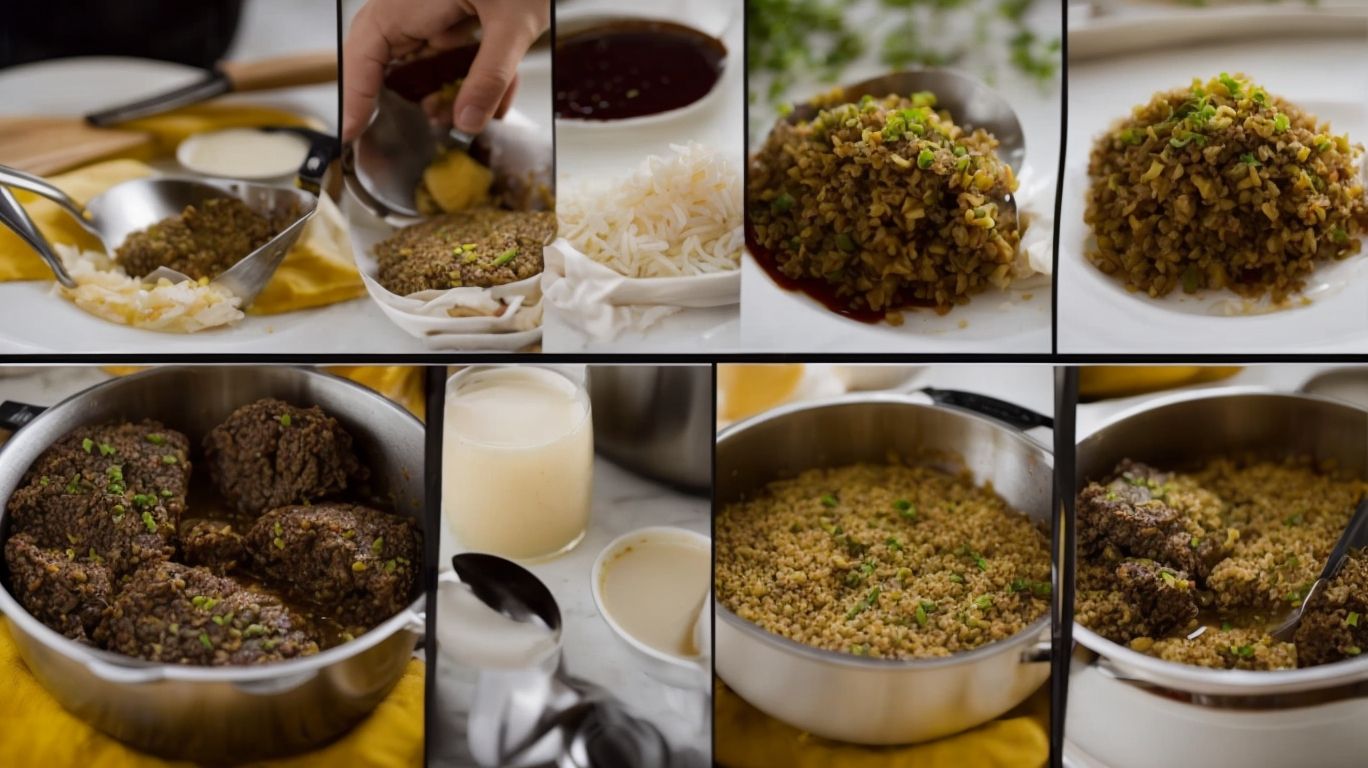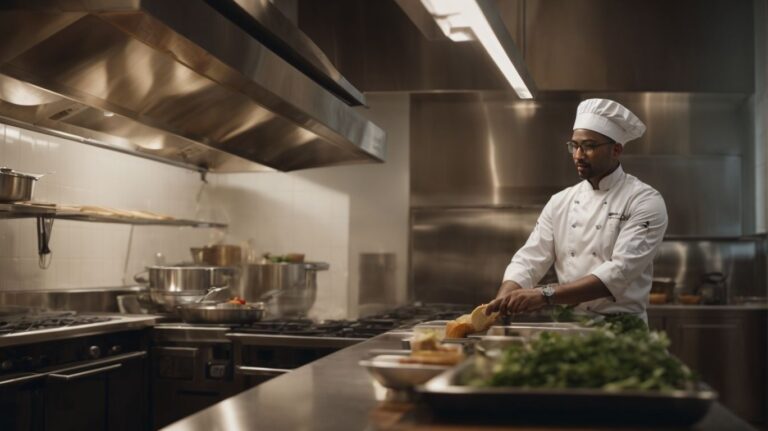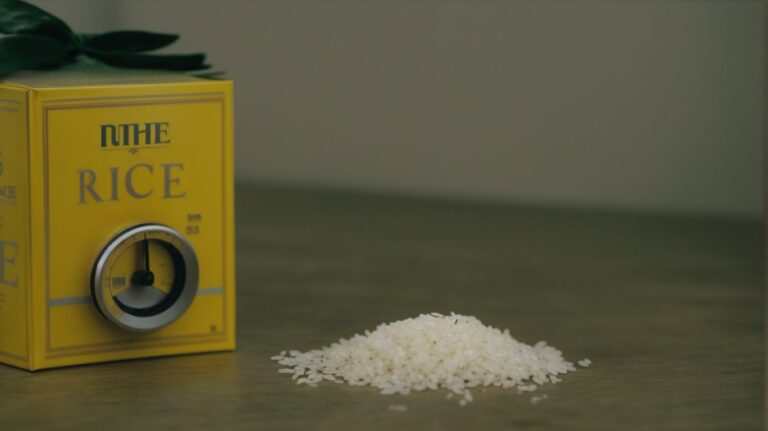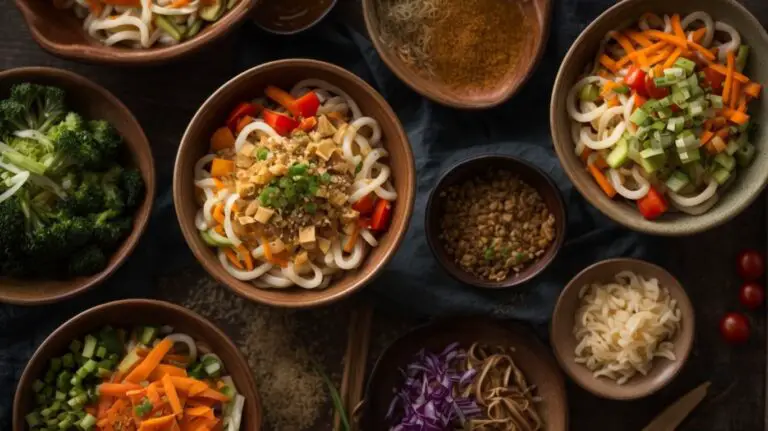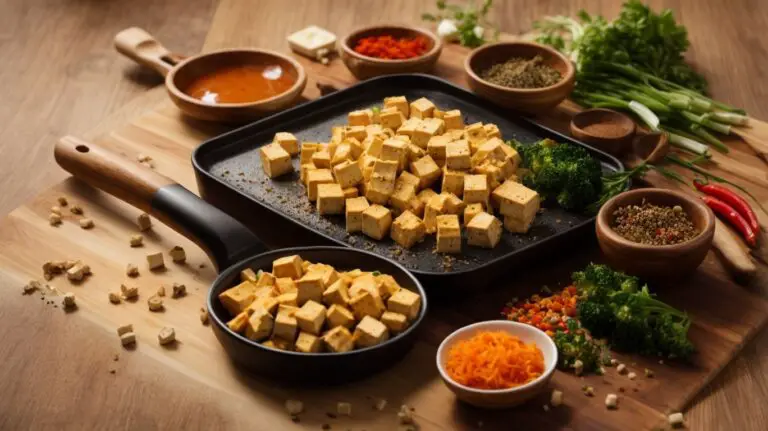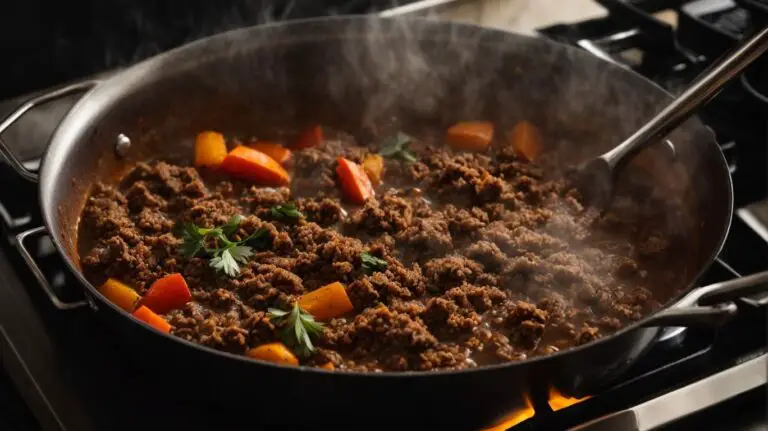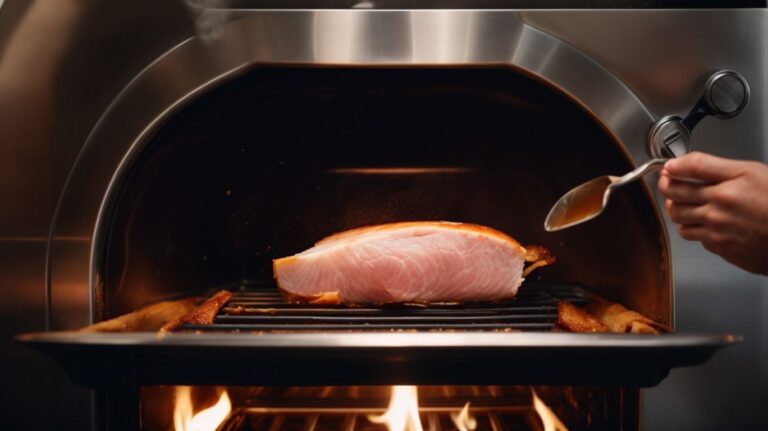How to Cook Haggis?
If you’ve ever been curious about the iconic Scottish dish known as haggis, you’ve come to the right place.
In this article, we’ll explore what haggis is made of, its origins, the different types available, and how to prepare and cook it to perfection. Whether you prefer traditional, vegetarian, or gluten-free haggis, we’ve got you covered.
Stay tuned for some mouthwatering haggis recipes and tips for serving this delicacy in style. Get ready to elevate your culinary skills with the ultimate guide to cooking haggis!
Key Takeaways:
About Haggis
Haggis, a traditional Scottish dish with a rich history, is a beloved recipe that has stood the test of time.
Originating in Scotland, haggis is a dish deeply rooted in the country’s culinary traditions, often associated with celebrations such as Burns Night. The preparation of haggis involves a mix of ingredients like minced sheep’s pluck (heart, liver, and lungs), combined with oats, suet, onions, and various spices. This unique blend is then traditionally encased in the sheep’s stomach before being simmered to perfection.
Haggis holds significant cultural importance in Scotland, symbolizing the nation’s pride and heritage. Despite its unconventional ingredients, haggis has gained popularity even beyond Scotland, with many embracing the dish’s robust flavors and hearty texture. Variations of classic haggis recipes can be found today, incorporating modern twists while still honoring the traditional methods, making it a versatile and enduring favorite among food enthusiasts worldwide.
What Is Haggis Made Of?
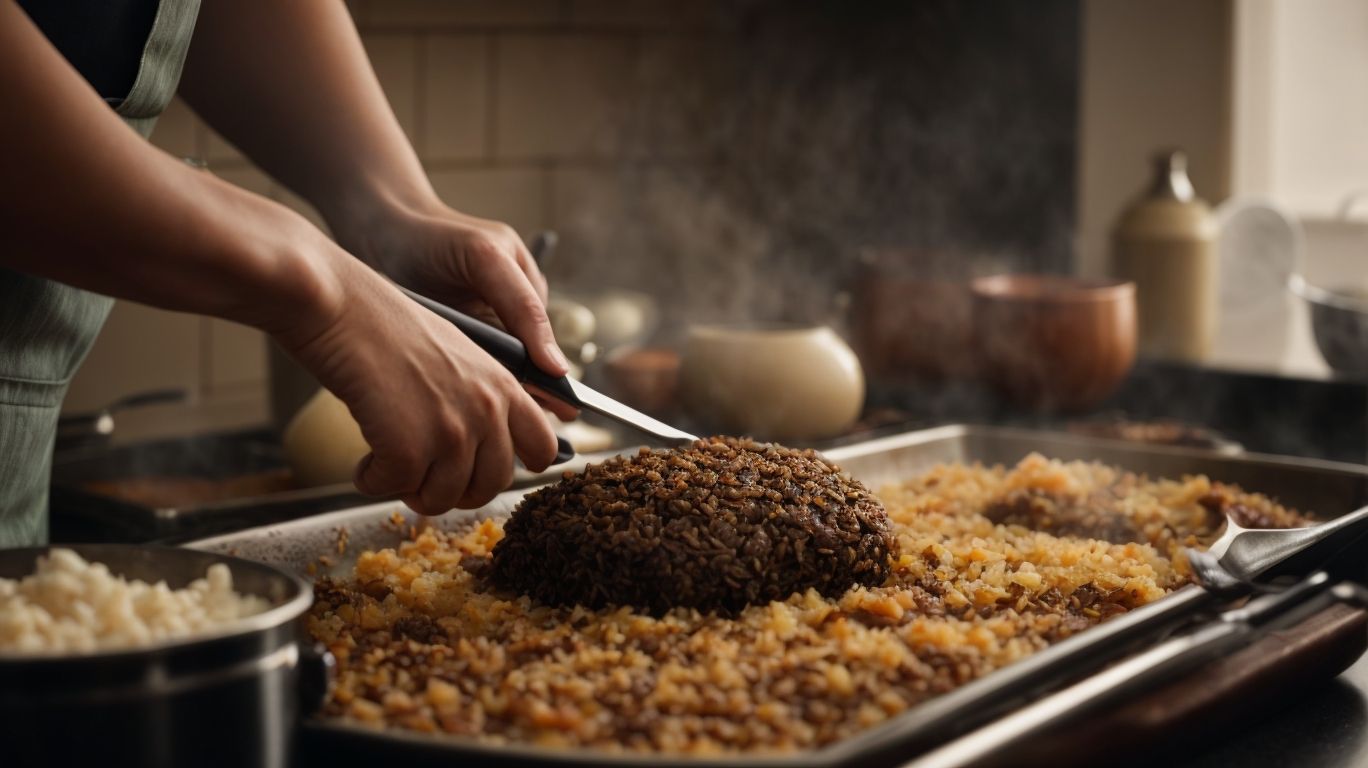
Credits: Poormet.Com – Vincent Garcia
Haggis is made of a unique blend of ingredients, including sheep’s pluck, oatmeal, and suet, creating a flavorful and hearty dish.
The traditional preparation of haggis involves mincing the sheep’s heart, liver, and lungs, along with finely chopped onions and spices, which are then mixed with the oatmeal and suet to form a rich filling.
This mixture is seasoned with salt, pepper, and other herbs, enhancing the savory taste of the dish.
The skillful blending of these components contributes to the distinctive taste and texture of haggis, which is then encased in a sheep’s stomach before being simmered to perfection.
Where Did Haggis Originate?
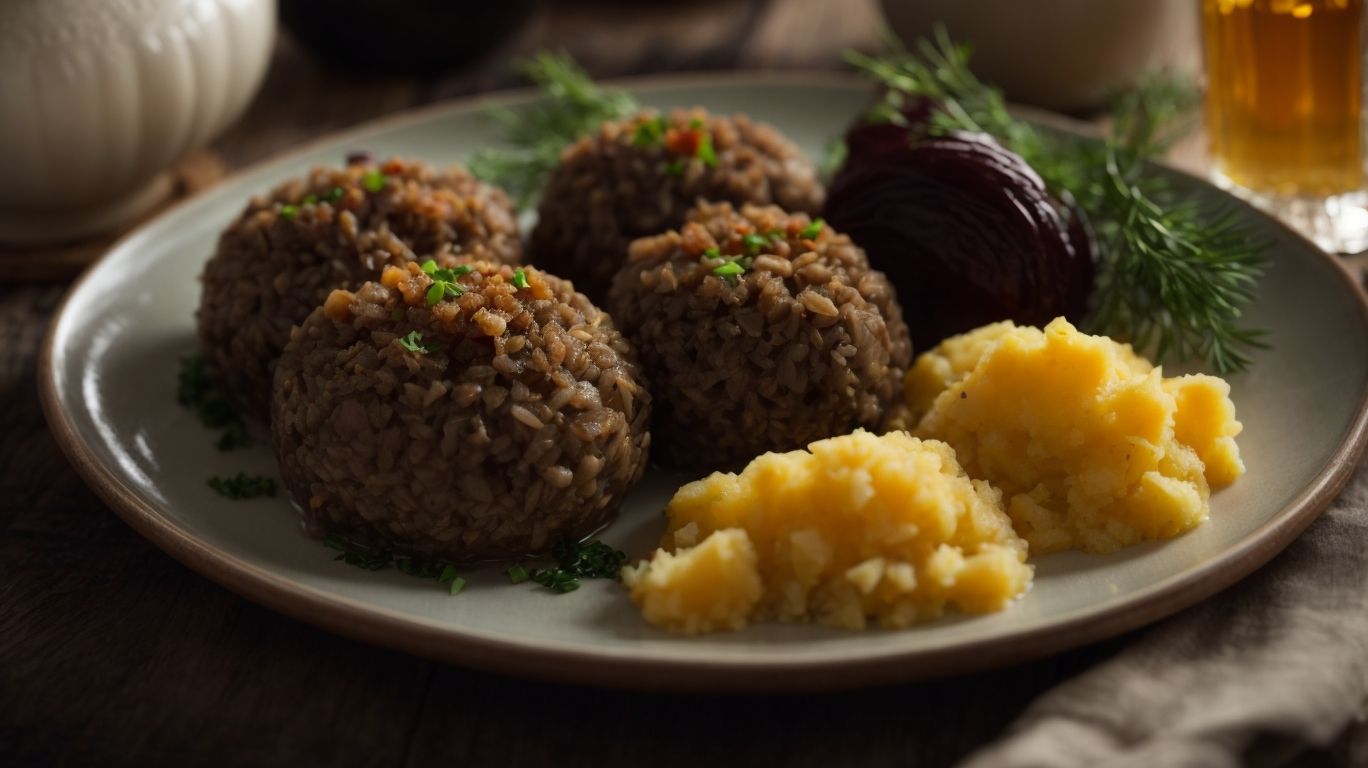
Credits: Poormet.Com – Benjamin Flores
Haggis originated in Scotland, where it has been a cherished part of Scottish cuisine for centuries, reflecting the culinary heritage of the Scots.
The history of haggis dates back to ancient times, where it was a practical way for Scottish farmers to utilize every part of the animal, minimizing waste and maximizing sustenance. Initially, haggis was a humble dish made from offal, oats, and spices, encased in sheep’s stomach lining, a tradition that has persisted over generations. Over time, haggis evolved to incorporate various flavors and textures, adapting to modern tastes while still honoring its traditional roots.
What Are the Different Types of Haggis?
There are various types of haggis available, catering to different dietary preferences and culinary traditions, including traditional, vegetarian, and gluten-free versions.
Traditional haggis is crafted with a mix of sheep’s heart, liver, and lungs, combined with onion, oatmeal, suet, and a blend of spices like pepper and allspice.
Veggie-friendly haggis substitutes the meat with mushrooms, lentils, nuts, and various herbs for a savory taste.
For those with gluten sensitivities, gluten-free haggis swaps traditional oatmeal for gluten-free grains.
Leading haggis producers like Macsween and Simon Howie offer a range of flavors, from classic recipes to innovative blends that cater to modern palates.
Traditional Haggis
Traditional haggis follows a time-honored recipe, combining select herbs, spices, and quality ingredients such as those from the renowned Blackface Meat Company.
Regarding preparing this iconic Scottish dish, Scottish butcher shops play a pivotal role in providing the essential ingredients. A key component of haggis is the use of offal meats, particularly sheep’s heart, liver, and lungs, mixed with onion, oatmeal, suet, and various seasonings. Traditional haggis recipes often include spices like nutmeg, black pepper, and coriander, enhancing the depth of flavors. Skillfully blending these components is crucial to achieving the distinctive taste and texture that haggis is known for, creating a true celebration of Scotland’s culinary heritage.
Vegetarian Haggis
For those seeking a meat-free alternative, vegetarian haggis offers a delightful option, often crafted into haggis sausages encased in natural casings.
Vegetarian haggis typically includes a blend of wholesome ingredients such as lentils, oats, nuts, and a mix of savory herbs and spices, providing a rich and flavorful experience. The preparation of vegetarian haggis involves cooking the ingredients together and then stuffing them into natural casings before being simmered or baked to perfection.
Plus the traditional vegetarian haggis recipe, there are innovative variations emerging in the culinary world, including the creation of haggis sausages that cater to different preferences and occasions. These plant-based options not only appeal to vegetarians but also to those looking to explore new, tasty alternatives.
Gluten-free Haggis
Gluten-free haggis caters to individuals with dietary restrictions, offering a delectable blend that retains the moist and firm texture characteristic of this beloved dish.
This innovative adaptation of the traditional haggis recipe revolves around substituting gluten-containing grains with alternatives like quinoa, lentils, and rice flour, ensuring a safe option for those avoiding gluten.
The texture profile of gluten-free haggis is carefully crafted to mimic the original’s unique combination of crumbly oats and rich meats, creating a harmonious mix that delights the palate.
Incorporating exclusive seasoning blends enhances the flavor profile, infusing each bite with a depth of taste that appeals to both haggis enthusiasts and newcomers to this Scottish specialty.
The meticulous attention to moisture levels in gluten-free haggis ensures that it remains succulent and satisfying, maintaining the essence of the dish while accommodating diverse dietary needs.
How to Prepare Haggis for Cooking?
Before cooking haggis, proper preparation is essential, including thawing, storing, and preparing the haggis casing for cooking.
When you’re ready to start the cooking process with your haggis, the first step is to ensure it is completely thawed. The best way to thaw haggis is by transferring it from the freezer to the refrigerator for at least 24 hours. This gradual thawing process helps maintain the texture and flavor of the haggis. Once thawed, carefully inspect the haggis casing for any damages or leaks. If any issues are found, it’s crucial to address them before continuing with the cooking process.
Thawing and Storing Haggis
Thawing and storing haggis correctly is crucial to maintain its quality and flavor, with methods such as refrigeration or cold water immersion recommended.
When thawing haggis in the refrigerator, ensure it is placed in the lower shelves away from other food items to prevent any cross-contamination. It’s ideal to thaw haggis in its original packaging or airtight container to retain its moisture and prevent absorption of odors from other foods. On the other hand, cold water immersion method involves submerging the sealed haggis in cold water, changing the water every 30 minutes to ensure consistent thawing and prevent bacterial growth.
Preparing the Haggis Casing
Preparing the haggis casing involves meticulous care and attention to detail, a process often entrusted to skilled craftsmen at traditional Scottish butcher shops offering diverse haggis options.
Whether it’s the natural casing made from sheep’s stomach or the modern alternatives like synthetic casings, choosing the right casing plays a crucial role in the overall taste and texture of the haggis. The craftsmanship involved in preparing the casing ensures that the flavors meld perfectly during the cooking process, resulting in that iconic savory dish loved by many. Sourcing the haggis casing from reputable Scottish butcher shops guarantees authenticity and quality, essential for maintaining the traditional essence of this beloved Scottish delicacy.
How to Cook Haggis?
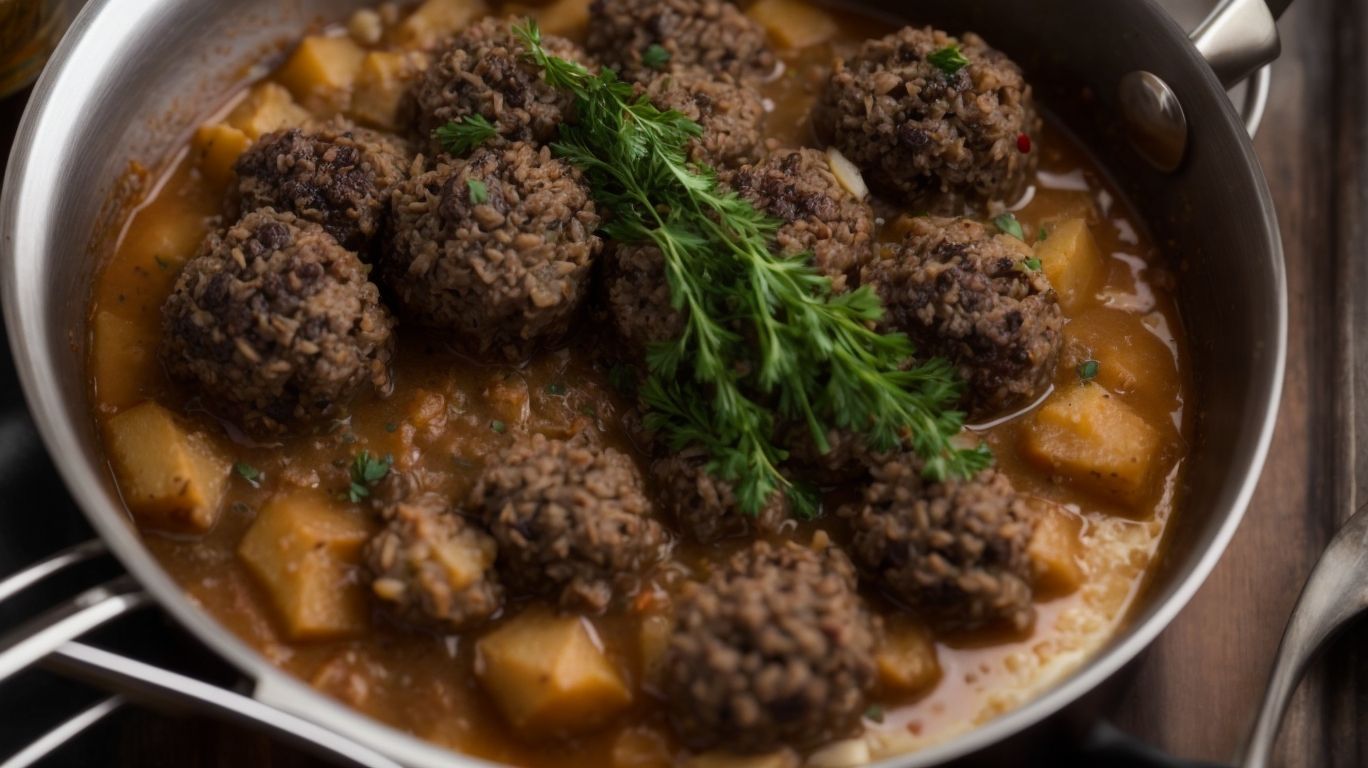
Credits: Poormet.Com – Joshua Williams
Cooking haggis to perfection requires precision and care, with various methods like microwave, oven, and crock pot cooking offering different results.
When preparing haggis in the microwave, it’s essential to puncture the casing prior to cooking to prevent it from bursting. Microwave on high for about 3-5 minutes per pound of haggis, rotating it halfway through for even cooking.
For oven cooking, preheat the oven to 350°F and place the haggis in a baking dish with a bit of water to keep it moist. Cover with foil and bake for approximately 1 hour per pound, ensuring the internal temperature reaches 160°F for safety.
Alternatively, the slow cooker offers a hands-off approach to haggis cooking. Place the haggis in the crock pot with a bit of liquid, such as broth or water, and cook on low for 6-8 hours or on high for 3-4 hours until tender and fully cooked.
Boiling Haggis
Boiling haggis in water is a traditional cooking method that infuses the dish with moisture and flavor, often served with neeps and tatties for a classic Scottish meal.
When haggis is boiled, the water plays a crucial role in softening the casing of the haggis and allowing the flavors from the ingredients to meld together harmoniously. The gentle simmering process helps the spices and seasonings permeate the meat and oats, resulting in a rich and succulent texture.
Once the haggis is tender and cooked through, it is traditionally paired with neeps (mashed turnips) and tatties (mashed potatoes), creating a balanced plate of flavors and textures that complement the savory essence of the haggis.
Baking Haggis
Baking haggis in the oven is a popular method that ensures a firm yet moist texture, allowing the flavors of the traditional recipe and seasoning to develop fully.
One of the key benefits of baking haggis is the even distribution of heat, which helps in achieving a consistent texture throughout the dish. This method not only avoids any burnt or undercooked spots but also helps in retaining the natural juices within the ingredients, resulting in a succulent and flavorful haggis.
Regarding enhancing the taste of haggis, the choice of seasoning blends plays a crucial role. The traditional mix of spices, such as pepper, nutmeg, and coriander, adds depth and complexity to the dish, complementing the richness of the meat and oats.
Grilling Haggis
Grilling haggis imparts a smoky charred flavor to the dish, enhancing its appeal with a touch of Scottish culinary tradition, ideal for an impressive presentation.
When grilling haggis, the heat transforms the exterior into a crispy and caramelized layer, contrasting beautifully with the savory filling inside. This technique not only elevates the taste but also creates a visual spectacle for diners. The unique marriage of the rustic, earthy haggis flavors with the charred smokiness from the grill adds depth and complexity to each bite.
Grilling haggis pays homage to the rich tradition of Scottish cuisine, where hearty ingredients are often cooked over open flames to enhance their natural essence. The method captures the essence of the rugged Scottish landscape, incorporating the elemental force of fire into the preparation of this celebrated dish.
What Are Some Traditional Haggis Recipes?
Traditional haggis recipes offer a delightful array of dishes, from haggis and neeps to the classic combination of haggis, tatties, and whisky cream sauce.
These traditional Scottish dishes are not only a treat for the taste buds but also a celebration of Scottish culinary heritage.
Haggis, a savory pudding made from sheep’s offal, oats, and spices, is often served alongside mashed neeps and tatties, creating a harmonious blend of flavors and textures.
For those with a sweet tooth, Cranachan, a traditional Scottish dessert made with raspberries, toasted oats, honey, and cream, pairs perfectly with haggis.
To elevate the Burns Night festivities, consider serving Robbie Burns cocktails such as the Bobby Burns or the Rabbie’s Dram, adding a touch of elegance and luxury to the evening.
Haggis and Neeps
The classic haggis and neeps dish is a quintessential Scottish dessert, combining savory haggis with the sweetness of neeps for a delightful presentation.
Preparing this traditional dessert involves cooking the haggis, a mixture of sheep’s heart, liver, and lungs combined with oatmeal and seasonings, creating a unique blend of flavors and textures.
The neeps, or mashed turnips, add a touch of sweetness and a velvety texture that perfectly balances the rich and robust flavors of the haggis.
When presented on a plate, the haggis and neeps dish reflects the rich culinary heritage of Scotland, inviting diners to experience a taste of its history and culture.
The dish is often enjoyed during festive occasions such as Burns Night, further enhancing its cultural significance.
Haggis, Tatties, and Whisky Sauce
Haggis, tatties, and whisky cream sauce form a classic Scottish dessert, perfect for celebrations like Burns Night with a side of festive cocktails.
Originating from the heart of Scottish culinary traditions, the combination of haggis, tatties, and whisky cream sauce embodies the rich flavors and history of Scotland. Haggis, a savory pudding made from sheep’s offal, oats, and spices, symbolizes the essence of Scottish cuisine, while tatties, or mashed potatoes, provide a hearty complement to the dish. The luxurious whisky cream sauce adds a touch of indulgence, blending the warmth of whisky with the smoothness of cream.
Haggis Toasties
Haggis toasties offer a unique twist on the traditional dish, combining haggis with French or Icelandic influences for a creative culinary experience.
When preparing these innovative haggis toasties, one can play around with different variations of haggis, whether it’s the traditional Scottish version or a vegetarian alternative. French influence can be seen in the use of gruyère cheese or Dijon mustard, adding a rich and tangy flavor profile to the dish. On the other hand, Icelandic touches might include smoked fish or pickled vegetables, elevating the taste with a Nordic flair.
For presentation, think about serving the haggis toasties with a side of fresh greens or a drizzle of truffle oil for a touch of luxury. The juxtaposition of Scottish, French, and Icelandic elements creates a culinary adventure that excites the palate and celebrates international flavors in a single bite.
Tips for Cooking the Perfect Haggis
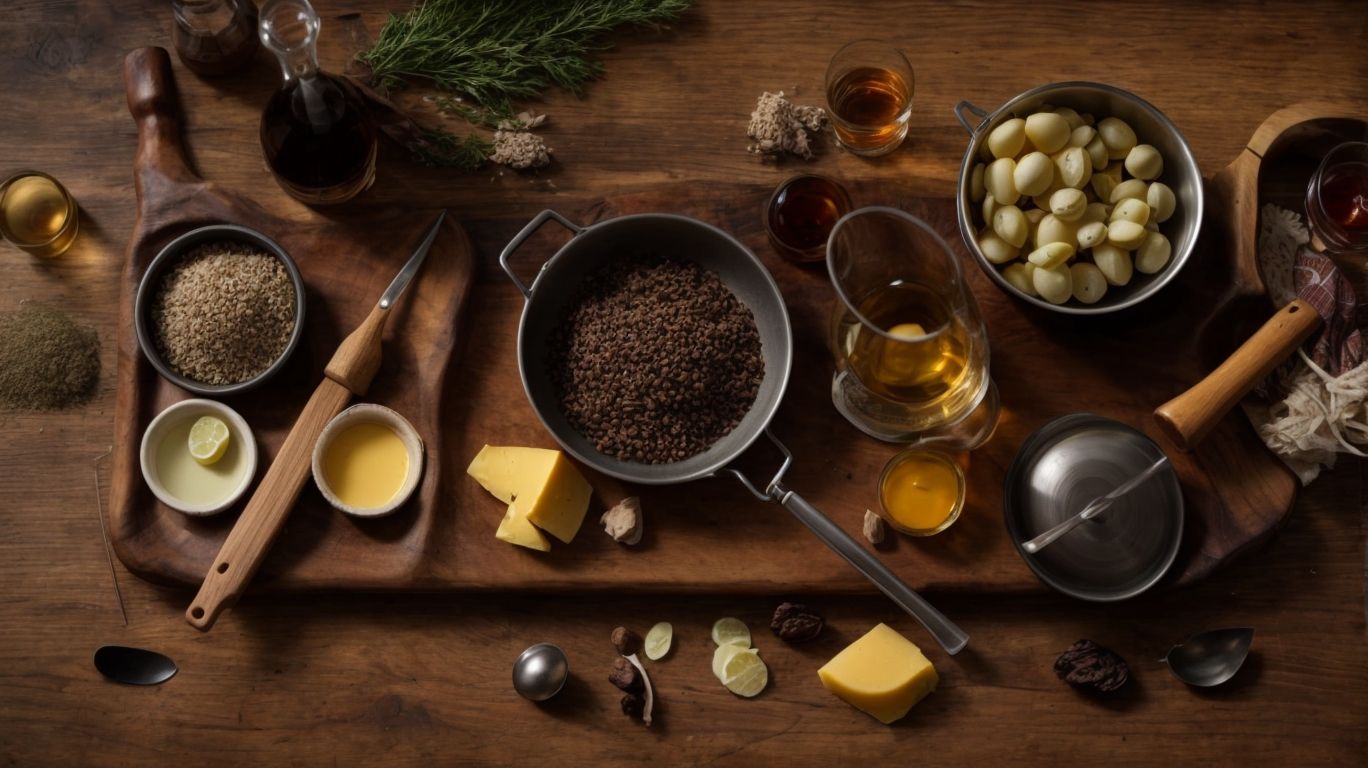
Credits: Poormet.Com – Ethan Lee
Cooking the perfect haggis requires attention to detail and following key tips, such as proper seasoning, herb selection, and mastering the cooking methods.
Regarding seasoning your haggis, a blend of salt, pepper, and traditional spices like nutmeg and allspice can enhance the flavors. Consider adding a dash of whiskey for an extra kick, but be careful not to overpower the dish.
- Choosing the right herbs plays a crucial role in elevating the taste profile of your haggis. Fresh thyme, sage, and rosemary are popular choices that complement the richness of the dish.
- Experimenting with cooking methods such as boiling, roasting, or even grilling can add unique nuances to the haggis flavor and texture.
Remember, the key lies in balancing these elements to create a harmonious and delicious haggis dish.
How to Serve Haggis?

Credits: Poormet.Com – Billy Garcia
Serving haggis is an art that involves traditional methods like pairing it with neeps and tatties, creating a harmonious and flavorful culinary experience.
One of the classic ways of serving haggis is by presenting it alongside creamy mashed potatoes and seasoned mashed turnips, known as neeps and tatties, respectively. This combination not only complements the rich and savory flavors of the haggis but also adds a delightful textural contrast.
Plus the traditional accompaniments, haggis can also be served with a Scotch whisky sauce or a red wine reduction to elevate its taste profile and offer a sophisticated dining experience. The rich and robust flavors of haggis pair wonderfully with the smoky notes of a peaty Scotch whisky, enhancing the overall dining experience.
Traditional Serving Style
The traditional haggis serving style pays homage to Scottish culinary heritage, often featuring garnishes like leeks and other traditional accompaniments.
Regarding presenting haggis, adhering to the Scottish culinary customs is key. This savory dish is usually served ceremoniously during Burns Suppers, a celebration of the renowned Scottish poet Robert Burns. The customary mode of serving involves a piper leading the procession, carrying the haggis on a silver tray for a grand entrance. Guests stand in respect as the haggis is brought in, often accompanied by the recitation of Burns’ poem, ‘Address to a Haggis’.
Modern Serving Ideas
Modern serving ideas for haggis focus on creative presentations, catering to diverse palates, and ensuring a flavorsome dining experience for all.
One innovative approach is to serve haggis in bite-sized portions as canapés. This not only adds a touch of elegance to the presentation but also facilitates easy consumption for guests mingling at events. Incorporating locally sourced ingredients like seasonal herbs or fruits as garnishes can further elevate the dish’s appeal. Haggis sliders or mini tartlets provide a fun twist, ideal for cocktail parties or casual gatherings. For larger events, haggis platters with assorted accompaniments offer versatility and cater to varied tastes.
Frequently Asked Questions
What is haggis and how do I cook it?
Haggis is a traditional Scottish dish made from sheep’s heart, liver, and lungs, mixed with oatmeal, spices, and suet. To cook it, you will need to stuff the mixture into a sheep’s stomach and simmer it for a few hours.
Can I make haggis without using a sheep’s stomach?
Yes, you can use an artificial casing or a baking dish to cook haggis instead of a sheep’s stomach. However, using the traditional method adds to the authenticity and flavor of the dish.
What kind of spices should I use when cooking haggis?
The traditional spices used in haggis include nutmeg, allspice, and black pepper. You can also add in some dried herbs like thyme or rosemary for added flavor.
How long does it take to cook haggis?
The cooking time for haggis depends on the size and type of casing used. Generally, it takes about 3-4 hours to cook haggis in a sheep’s stomach, and 1-2 hours in an artificial casing or baking dish.
Can I freeze haggis?
Yes, you can freeze haggis for up to 3 months. Make sure to wrap it tightly in plastic wrap or put it in an airtight container before freezing. Thaw it in the refrigerator before reheating.
What are some traditional sides to serve with haggis?
Haggis is often served with mashed potatoes, turnips or rutabagas, and a whisky sauce. You can also serve it with neeps and tatties (turnips and potatoes mashed together) or as part of a full Scottish breakfast.

